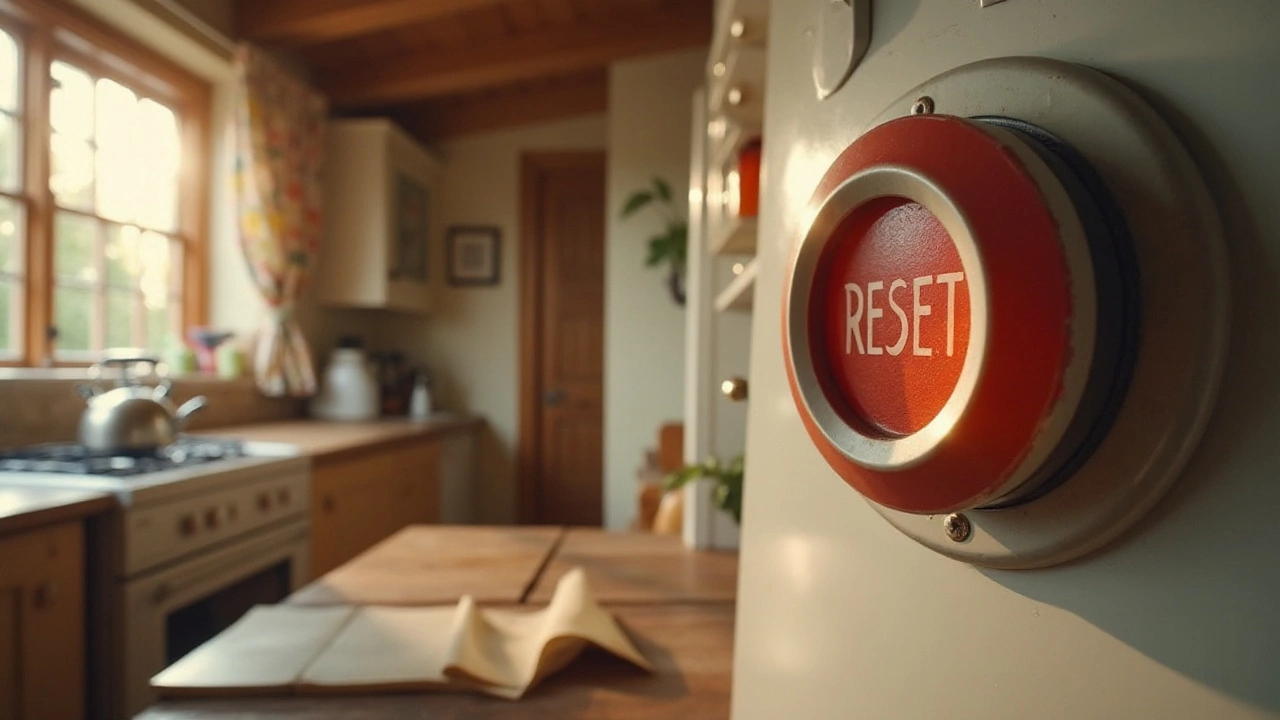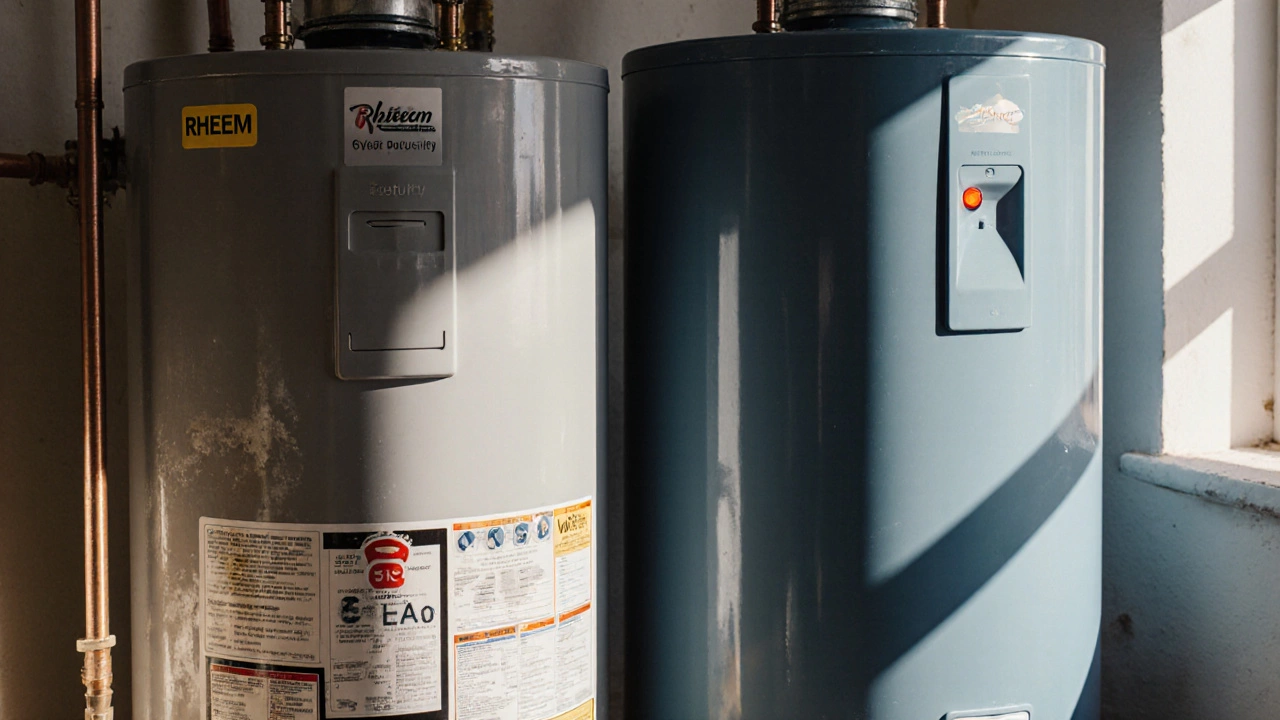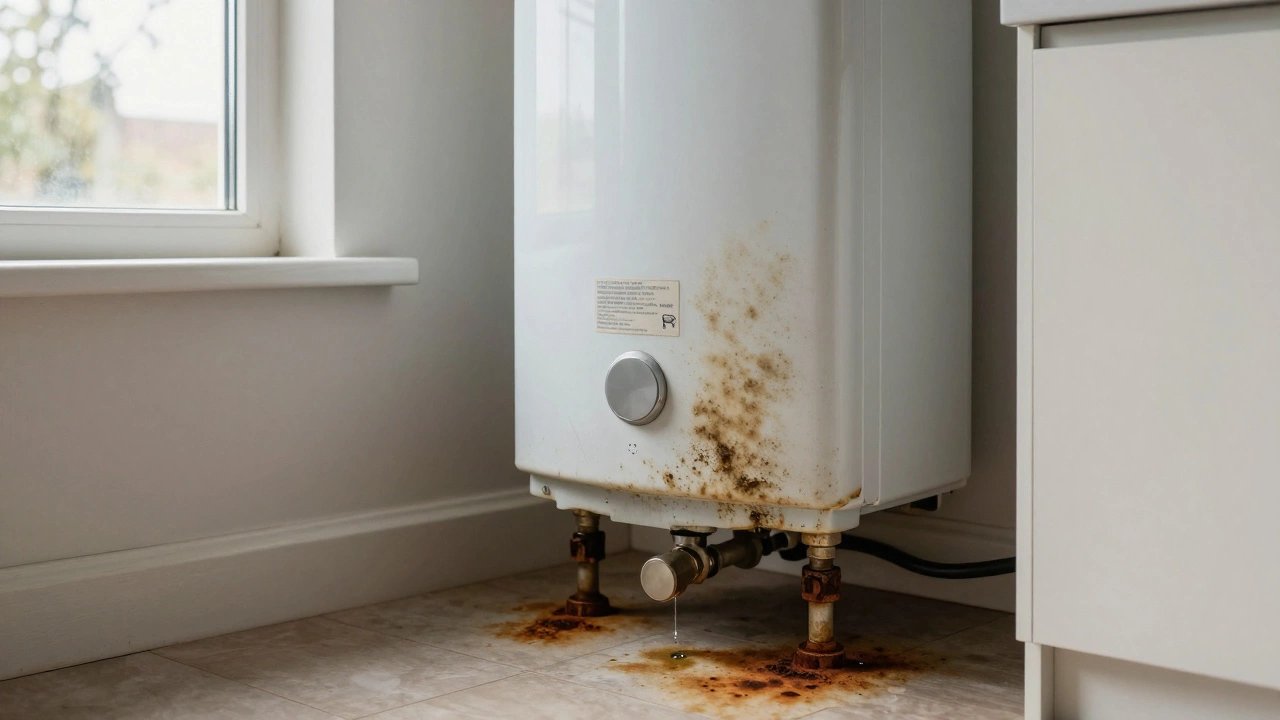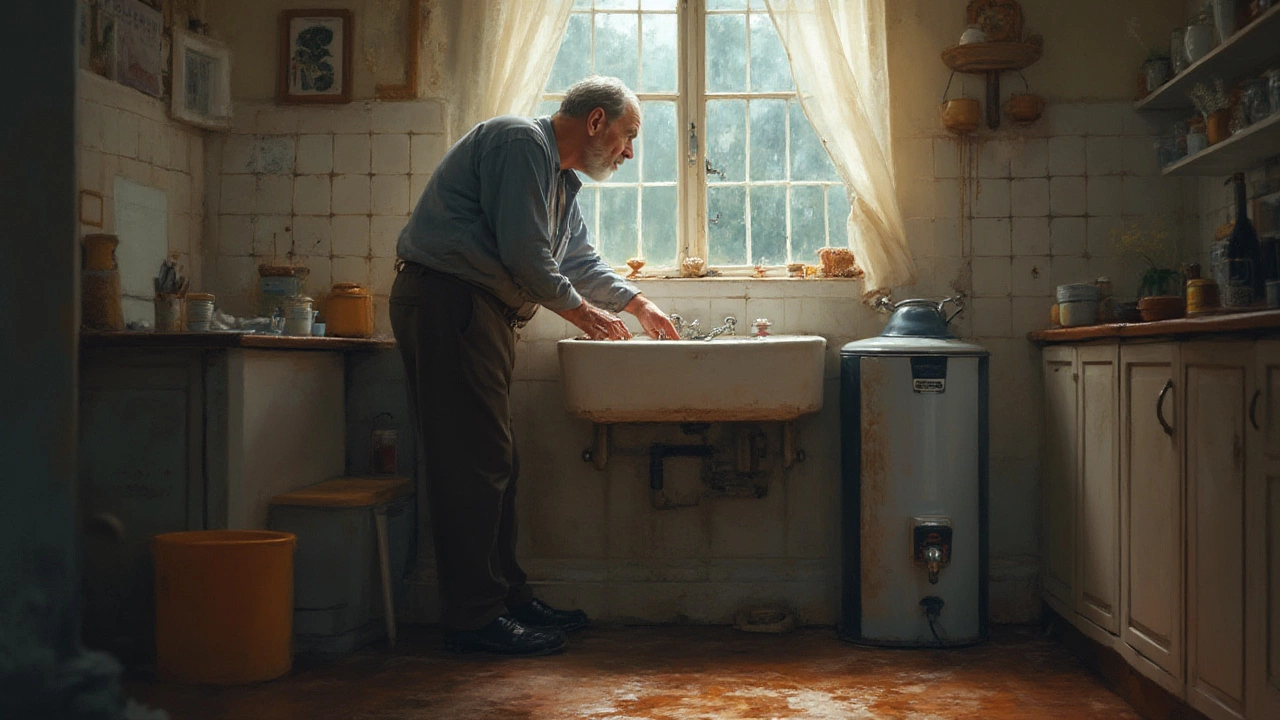
- 9 Jul 2025
- Gideon Thornton
- 0
Ever hopped into a morning shower, expecting that delicious rush of warmth—only to flinch under a blast of ice-cold water? Your hot water heater is one of those things in life you barely notice… until it ruins your day. Most of us have no clue how long these things are supposed to last or when we should start shopping for a replacement. But missing the warning signs could mean more than just discomfort—it can turn into flooded basements or sky-high energy bills. So, how do you tell if you need a new hot water heater? Let’s untangle the mystery, separate fact from fiction, and make sure your home—and sanity—stay comfortably warm.
Obvious and Sneaky Warning Signs Your Water Heater Is Dying
It’s easy to ignore that little tank humming away in the corner, but missing the warning signs can lead to disaster. Most hot water heaters last between 8 and 12 years. Sure, you can stretch it a little if you’re lucky or extremely diligent with maintenance, but once that tank is pushing a decade, you’re living on borrowed time.
The most obvious red flag? Age. If your water heater was installed before everyone had smartphones, it’s time to get suspicious. You can find the manufacturing date on the label, usually encoded within the serial number—every brand has its own code, but a quick check online will help you decode yours. If it’s past 10 years, replacement is more cost-effective than repair, especially if anything else on this list rings a bell.
Now, let’s talk performance. If you notice your showers turning cold faster than they used to, or your hot water runs out after just one load of dishes, your hot water heater probably isn’t keeping up. An aging tank loses efficiency, and mineral sediments build up inside, insulating the water from the heat source. This means your heater has to work even harder to do the same job, and that usually ends poorly.
Keep an eye on temperature swings and water clarity. Does your water come out rusty, metallic, or with an odd smell? Sediment and corrosion inside a steel tank will travel right up to your tap. This is especially common in older tanks and hard water areas. Rust-colored water is a classic symptom of a corroded anode rod or, worse, the tank itself rusting through. Swapping out the anode rod can buy you some time, but when the tank itself is shot, it’s game over.
Leaks are less subtle but equally important. Even a trickle around the base of your tank signals serious internal problems. Water expands when heated and contracts as it cools, creating pressure fluctuations over the years that eventually split weakened metal. Leaks from the top usually mean a loose connection; leaks from the bottom or the seams...that’s often the beginning of the end.
Noises should catch your attention too. If your water heater makes rumbling, popping, or banging sounds, that’s usually sediment cooking at the bottom of the tank. Not only does this wear your heater out faster, but it also makes it less efficient, costing more on your energy bill. Persistent noises usually mean it’s too late to flush the system, and replacement is the smarter move.
Here’s a handy chart that breaks down the classic warning signs at a glance:
| Warning Sign | What It Usually Means | What You Should Do |
|---|---|---|
| Water isn’t hot | Heating element or thermostat failing | Check power/gas; consider replacing heater if old |
| Rusty water | Tank corroding from inside | Test with buckets; plan for replacement |
| Leaks at base | Cracked tank, internal failure | Replace unit immediately |
| Strange noises | Sediment buildup or overheating | Flush if new; replace if old |
| Drop in hot water capacity | Sediment or broken element | Flush/repair, replace if old |
| Heater over 10 years | Out of lifespan | Budget for new heater |
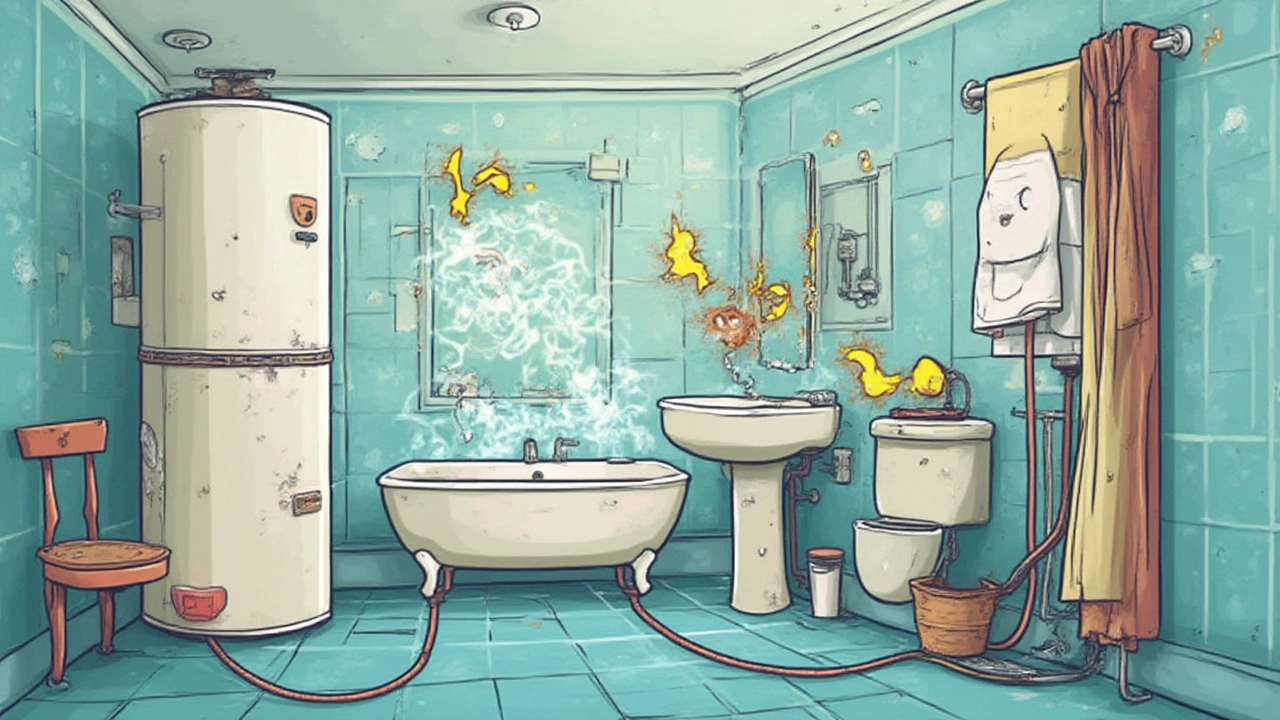
How to Test and Troubleshoot: A Hands-On Guide for Homeowners
Before you rip out your tank and start shopping, let’s see if you can confirm the problem. Don’t worry, no fancy tools or technical wizardry required. Grab a flashlight, a bucket, and your phone (just in case you want to snap a photo of something suspicious for your plumber or warranty claim).
Step one: Check the age. Look for the manufacturer’s label on the side of the tank. The serial number should have a date stamp or a clear manufacture year. Don’t go by install date alone—many homes have inherited older tanks from previous owners.
Next, drain a bucket of hot water directly from the tank’s drain valve (be careful, it’s hot—use gloves). Is the water clear, rusty, or filled with sediment? A quick flush can sometimes clear minor build-up, but consistent debris or rust is trouble. If flushing makes things worse, sediment has likely hardened at the bottom, and you’re out of luck.
Look for visible leaks. Pay special attention to seams, valves, and the base. A slow drip is enough to signal internal failure. Don’t ignore even the smallest puddle—water under high pressure finds its way out through tiny cracks, which will only get bigger over time.
Test your water temperature at several locations (shower, kitchen, laundry). If some faucets are cold while others are hot, the problem might be your plumbing, not the heater. But if all are lukewarm or ice-cold, the heater is struggling. Try resetting the thermostat (often behind a small panel), but if you see scorching or absolutely no heat, something’s up with the heating element or gas burner.
Notice your energy bills creeping up over the months? That might be your tank working overtime, especially if you live in a colder climate or have increased your hot water usage. Modern water heaters are nearly 30% more efficient than models built a decade ago, so replacement quickly pays for itself on energy savings alone.
Finally, keep your ears open. Listen when the tank is running—rattles, bangs, or gurgles mean sediment’s cooked on and insulating the tank from its heat source. A quick flush might help if caught early, but past a certain point, these sounds mean replacement, not repair.
Here’s a DIY troubleshooting checklist:
- Check heater age on label
- Test for water rust/discoloration in a bucket
- Inspect base for leaks/puddles
- Reset heater thermostat (when cool)
- Listen for new noises during operation
- Compare energy bills to last year
If you spot two or more warning signs, it’s usually a “replace” situation, especially if your tank is close to or over 10 years old. Brand new heater only showing one issue? You might just need a repair—call a trusted pro for a second opinion.
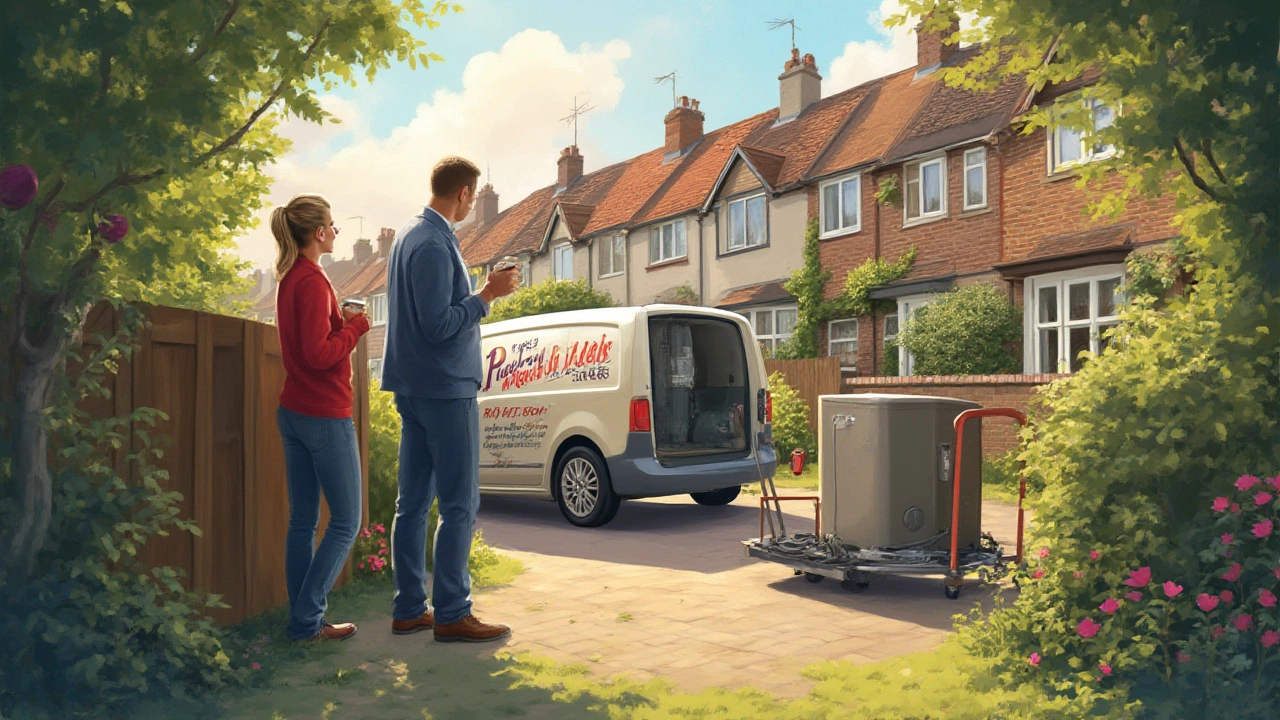
Replacement Tips: Picking a New Water Heater That Makes Sense
You’ve run the tests and the results aren’t good. Time to pick a new hot water heater—but what do you choose? Stepping into a big box store, you’ll see storage tanks, tankless models (sometimes called "on-demand"), hybrids, and even solar water heaters. So, which one is best?
The old standby is the storage tank heater. It’s tried, true, and usually the cheapest to install. These tanks hold a set amount (usually 40 or 50 gallons for most homes) and keep it hot all day. If your needs haven’t changed and you’re mostly happy with the old tank—except for its age—replacing like-for-like is simple and gets you back in practice fast. Stick with Energy Star models for noticeable energy bill savings versus earlier generations.
Tankless water heaters are gaining ground fast. They heat water only as you need it, so there’s no tank to run dry. Lifetime cost is lower since there’s little standby heat loss, and natural gas models are especially efficient. They’re great for larger homes or families who use a lot of hot water in short bursts—think teenagers, laundry, dishes, all at once. Installation is pricier upfront and you’ll need a pro, but newer units routinely last 20 years, which can save you two tank replacements down the road.
Hybrid (heat pump) water heaters are another option, combining tank storage with a super efficient electric heat pump. They use about 60% less electricity than standard electric tanks. They’re a little bit bigger and need some space for adequate airflow, but they work well for warm climates with access to lots of ambient air.
Solar water heaters? They exist, and they save big on energy in sunny climates, but installation is expensive and not practical everywhere. Still, if you live in a place like Arizona or southern California, and plan to stay in your house for many years, solar might be worth a look.
No matter what you decide, size matters. A too-small tank means cold showers and frustration, while an over-sized tank just wastes energy. Most manufacturers have online calculators where you plug in family size, bathroom count, and usage habits. Here’s a ballpark chart:
| Household Size | Recommended Tank Size (Gallons) |
|---|---|
| 1-2 people | 30-40 |
| 3-4 people | 40-50 |
| 5+ people | 50-80 |
One last tip: always get your new tank professionally installed. Skimping here can void remote warranties or, worse, flood your basement just when you thought all your problems were solved. Most cities require permits and proper venting, especially for gas heaters. Check reviews, ask neighbors for referrals, and read the warranty fine print.
Don’t forget regular maintenance, no matter the model. New heaters last years longer with annual flushing, anode rod checks, and a quick look for leaks. Set a reminder on your phone, and save yourself hundreds down the road. If your tap starts with hot water, enjoy it while it lasts—but always keep an eye out for the warning signs. Nothing good ever comes from ignoring cold, rusty water in your pipes.


